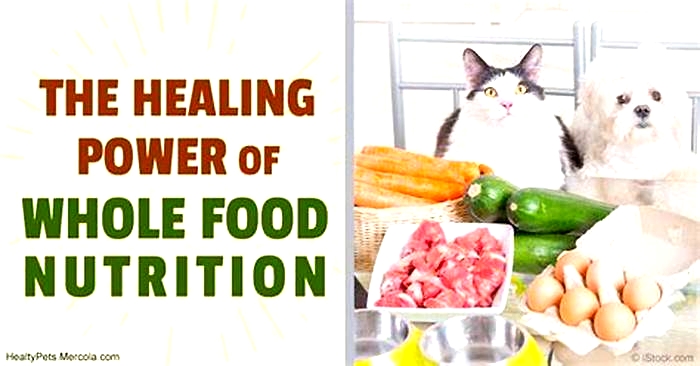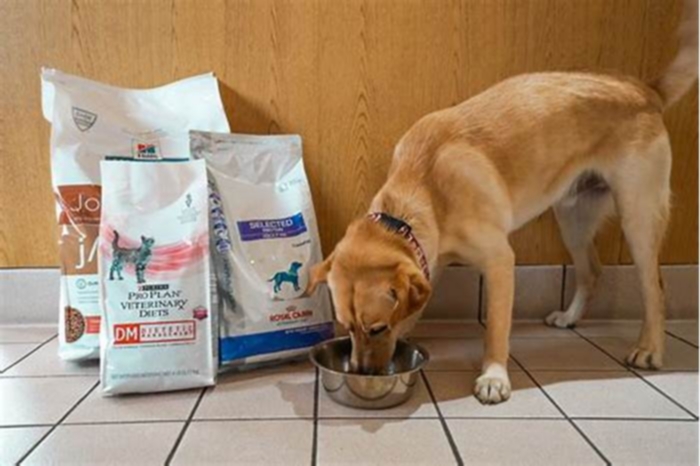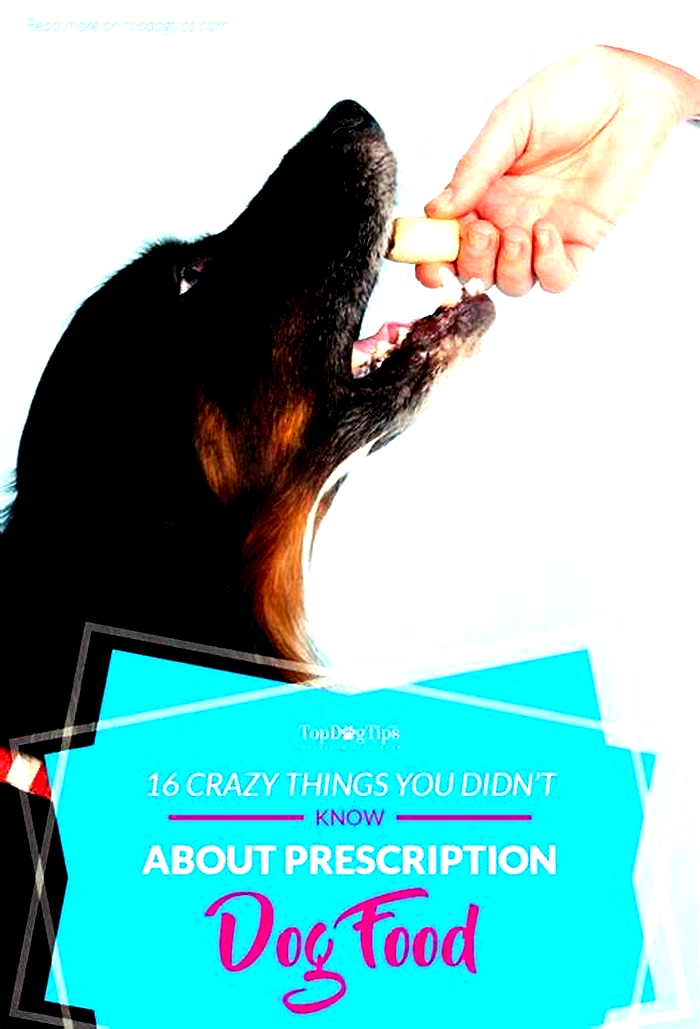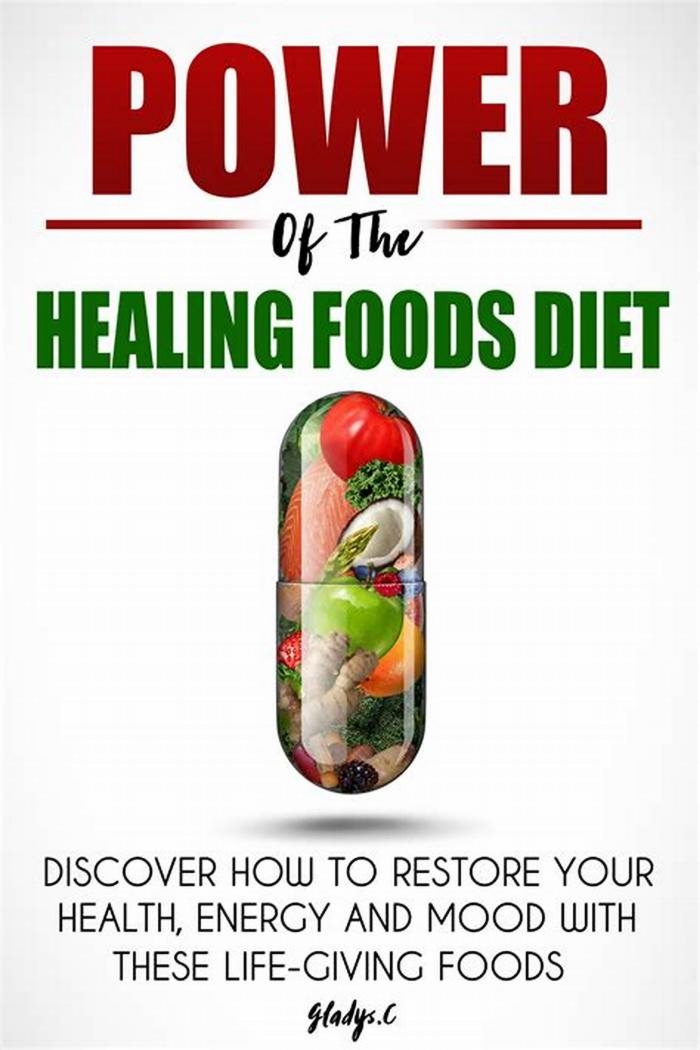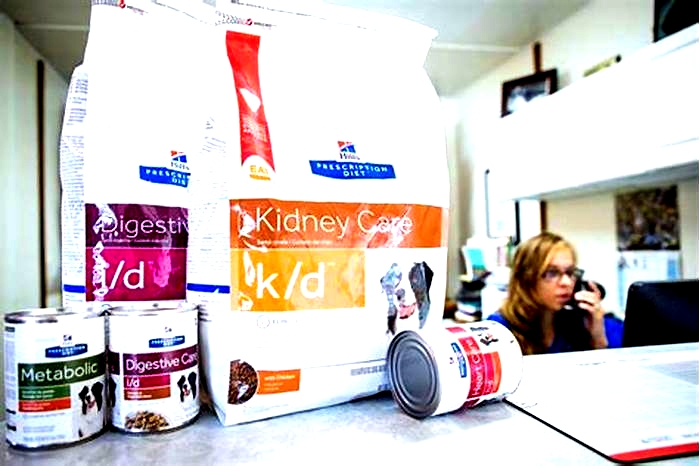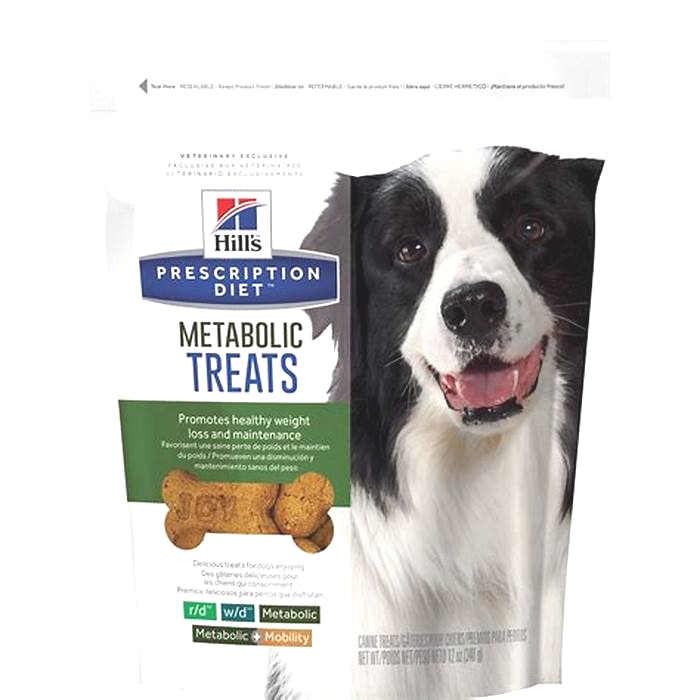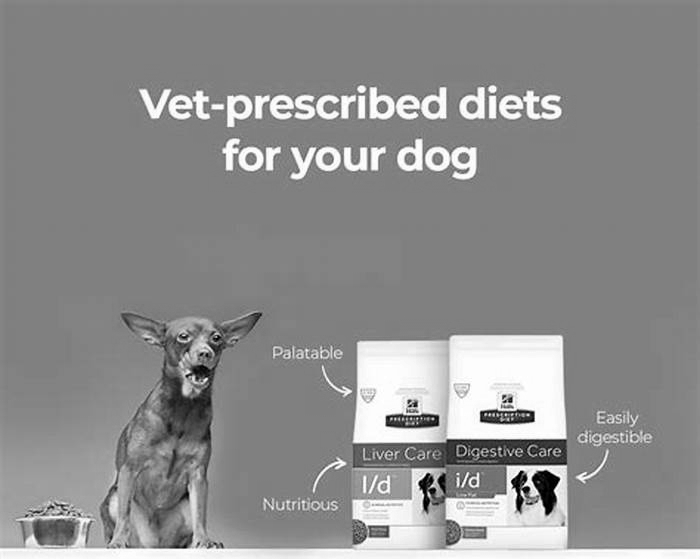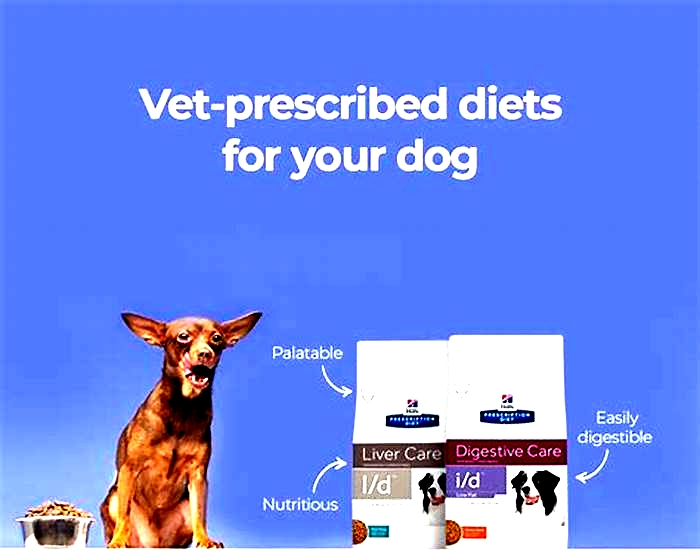Healing through Nutrition The Role of Prescription Dog Diets

Should You Feed Your Pet Prescription Dog Food? Here's When It's a Good Idea
The line dividing food and medicine can be fuzzy. When you eat a handful of raspberries, youre providing your body with important nutrients and antioxidants. A piece of salmon contains a lot of protein, but its also high in omega-3 fatty acids that can reduce inflammation.
Pet food manufacturers have taken the idea of food as medicine a step furtherby designing products to help manage a wide variety of diseases. These foods are available only with a veterinarians prescription because they can do harm when used under the wrong circumstances.
Heres what you need to know about prescription dog food.
What Is Prescription Dog Food?
Prescription dog foods (also called therapeutic dog foods or veterinary diets) are made with ingredients and nutritional supplements combined in just the right proportions to support the health of dogs who have a particular disease or illness.
For example, a veterinarian might prescribe prescription dog food for a dog with arthritis that contains high levels of omega-3 fatty acids and antioxidants to reduce inflammation, glucosamine and chondroitin sulfate to protect joint cartilage, and added L-carnitine (an amino acid) to keep muscles strong.
Before a prescription dog food can be sold, the manufacturer must put it through extensive testing to show that its safe and effective for dogs with specific diseases. Manufacturers also adhere to rigorous safety and quality control standards when making these special diets. All of this helps ensure that prescription dog foods are worth the extra money.
When to Start a Prescription Dog Food Diet
Many health problems in dogs can be managed, at least in part, through their diet. A veterinarian familiar with the specifics of a dogs case is in the best position to determine if a prescription dog food is appropriate. Talk to your veterinarian about prescription dog food if any of the following apply to your dog.
1. Your Dog Needs to Lose Weight
Extra body fat makes life shorter and less enjoyable for overweight dogs. It can cause or make many health problems worse, too, including:
If your dog is only a little overweight, an over-the-counter diet dog food, such as Hill's Science Diet Adult Perfect Weight, may help. But dogs who need to lose a lot of weight tend to do better on a prescription weight loss food.
Different diets seem to work better for different dogs, but most vet-recommended prescription dog foods combine increased fiber to help dogs feel full without adding calories, moderate or high protein to maintain muscle, and low levels of carbohydrates and fats. Good options include
Your veterinarian can design a weight loss plan tailored to your dogs individual needs, help you monitor how its working, and make necessary changes as your dogs body condition changes.
2. Your Dog Has Bladder Stones
Symptoms of bladder stones in dogs include bloody urine, straining to urinate, and discomfort. Some types of bladder stones can be dissolved with prescription dog foods or medicine, while others need to be physically removed via surgery or other treatments. But an appropriate diet can almost always reduce the chances that bladder stones will return.
For dogs who are prone to bladder stones, wet foods are usually preferable to dry because they help keep the dogs urine dilute, which reduces the chances that stones will form. Royal Canin Veterinary Diet Adult Urinary SO and Hill's Prescription Diet c/d Multicare dissolve struvite stones and help reduce the formation of struvite and calcium oxalate stones. Hill's Prescription Diet u/d Urinary Care helps dissolve and prevent the recurrence of urate and cystine stones.
Your veterinarian can determine what type of bladder stones your dog has and how they should be treated.
3. Your Dog Has Kidney Disease
Dogs with chronic kidney disease can live for many months (or even years!) with appropriate treatment. Prescription dog foods for kidney disease can be an important part of therapy.
These diets usually contain a moderate amount of high-quality protein and are low in phosphorous and sodium to reduce the workload on the kidneys. Omega-3 fatty acids, essential amino acids, vitamins, minerals, and antioxidants may all be supplemented to promote kidney function and overall health and wellness. Whenever possible, dogs with kidney disease should eat wet dog food to help prevent dehydration.
Because dogs with kidney disease often have a reduced appetite, its important to find a kidney diet that your dog enjoys eating. You might need to try several options before finding the one that works best for your dog. Some go-to's include:
5. Your Dog Has Arthritis
Arthritis is very common in dogs, particularly as they get older. Combining different forms of treatment, including diet, can decrease a dogs discomfort and increase their mobility.
Therapeutic dog foods that veterinarians prescribe to dogs with arthritis are usually enriched with omega-3 fatty acids, glucosamine, chondroitin sulfate, and antioxidants to reduce inflammation and promote joint health. These foods are also often slightly calorie-restricted to help dogs stay slim and supplemented with L-carnitine, an amino acid that helps dogs build and maintain muscle. Hill's Prescription Diet j/d and Purina Pro Plan Veterinary Diets JM Joint Mobility are both excellent prescription foods for dogs with arthritis.
And these arent the only conditions that can be managed with prescription dog food! For example:
If you think your pet could benefit from prescription dog food, talk with your vet.
How to Transition Your Dog to Prescription Food
If your veterinarian has recommended prescription dog food, your next question is probably how to switch to the new diet. In most cases, its best to make the transition slowly.
Gradually mix increasing amounts of the new food in with decreasing amounts of your dogs old diet over a week or two. This gives your dog a chance to get used to the taste of the new food and gives their GI tract time to adapt. Go even more slowly if your dog is finicky or initially turns up their nose at the new food.
But there are times (when youre dealing with a food allergy or intolerance, for example) when your veterinarian may recommend making a quick transition to a new food, so always follow your vets instructions. If you cant get your dog to eat their new prescription diet, talk to your veterinarian about other options that may be available.
Prescription dog foods can reduce and sometimes even eliminate the need for a dog to be on medications or receive other forms of treatment. Ask your vet how diet can play a role in your dogs healthcare.
Featured Image: iStock/Chalabala
WRITTEN BY
Jennifer Coates, DVMVeterinarian
Dr. Jennifer Coates is an accomplished veterinarian, writer, editor, and consultant with years of experience in the fields of veterinary...
Dr. Axes Healing Foods Diet (What to Eat & What to Avoid)
What you grab at the grocery store can have a huge impact on overall health. In fact, while loading your cart up with refined grains, sugary drinks and processed foods can increase inflammation and tank energy levels, filling up on healthy, healing foods can help keep you feeling your best and protect against chronic disease.
The healing foods diet is designed to heal the body and improve health by encouraging the consumption of nutritious, whole foods like fruits, veggies and healthy fats.
Plus, this simple eating pattern is a great way to ensure you supply your body with a steady stream of the nutrients you need to help prevent nutritional deficiencies in your diet.
Healing Foods Diet Principles
The healing foods diet is an eating plan that focuses on replacing refined, processed and inflammatory ingredients in your diet with nutritious, whole food alternatives to promote better health.
The diet includes a few simple steps that involve making some simple switches in your diet. Best of all, unlike other diets with extensive, complicated rules and regulations, the healing foods diet relies on three basic principles:
Ad

1. Swap out Unhealthy Fats
Trading unhealthy fats for healthier options is one of the key components of the healing foods diet.
This is because unhealthy fats, such as hydrogenated and partially hydrogenated oils, trans fats and refined vegetable oils, can cause chronic inflammation and may contribute to conditions like heart disease, stroke, diabetes and cancer.
Healthy fats, on the other hand, are essential for everything from hormone production to cancer prevention, brain development and weight loss.
2. Change the Meats You Eat
Selecting sustainable sources of meat not only helps support ethical farming practices and minimizes your environmental impact, but it may also be better for your health as well.
For instance, grass-fed beef is significantly higher in heart-healthy omega-3 fatty acids than grain-fed varieties and is also richer in conjugated linoleic acid, a type of fatty acid that has been associated with a multitude of health benefits.
Similarly, wild-caught fish is lower in calories, higher in important minerals and less likely to be contaminated by harmful toxins than conventional farmed fish.
3. Remove Refined Sugars and Grains
During processing, refined grains are stripped of many important vitamins and minerals, producing a final product high in calories, carbs and sugar but lacking in essential nutrients.
White rice, pasta and noodles are a few examples of refined grains that are low in the important micronutrients that your body needs. Swapping these foods out for healthy whole grain alternatives is a great way to squeeze some extra vitamins and minerals into your diet to support healing.
Related: Improve Your Diet & Health with a Clean Eating Meal Plan
Benefits
1. Decreases Inflammation
Acute inflammation is a normal part of the immune process that helps protect the body against foreign invaders. Chronic inflammation, on the other hand, can contribute to conditions like heart disease, obesity and diabetes.
While some foods can increase markers of inflammation, others can help fight inflammation and aid in the prevention of chronic disease.
Plant-based foods like fruits and veggies, in particular, are linked to lower levels of inflammation in the body.
2. Improves Heart Health
As the leading cause of death around the world, heart disease accounts for around 31.5 percent of deaths globally.
Making a few simple swaps in your diet and filling up on heart-healthy foods as part of the healing foods diet is a simple way to reduce the risk of heart disease to keep your heart healthy and strong.
Healthy fats, high-fiber foods and antioxidant-rich fruits and veggies are all plentiful on the healing foods diet and can help protect against conditions like high blood pressure, heart disease and stroke.
Ad

3. Stabilizes Blood Sugar
Sustaining high blood sugar levels can be detrimental to overall health. Not only can it worsen diabetes symptoms and cause serious side effects like vision loss and nerve damage, but it can also lead to a condition known as insulin resistance.
Insulin is the hormone responsible for transporting sugar from the bloodstream to the cells. When you load up with lots of high-carb, sugary foods, it increases levels of both blood sugar and insulin.
Over time, maintaining high levels of insulin in the blood can impair your bodys ability to use it efficiently, spiking blood sugar levels and throwing hormones out of whack.
Not only is the healing foods diet low in unhealthy ingredients that can contribute to insulin resistance, but its also rich in high-fiber, nutrient-dense foods to support better blood sugar control.
4. Rich in Minimally Processed Ingredients
Shockingly, some studies estimate that nearly 58 percent of total daily calories in the average American diet come from ultra-processed foods. These foods are stripped of their nutritional value and associated with a long list of health issues, including heart disease, cancer and even death.
All foods included on the healing foods diet are minimally processed. This helps maximize their nutrient content and reduces the risk of adverse health effects associated with other processed ingredients.
5. Prevents Nutritional Deficiencies
In addition to promoting healing with whole foods, the healing foods diet also ensures you get the important vitamins, minerals and antioxidants your body needs to support overall health.
Nutritional deficiencies can cause a slew of negative symptoms, including low energy levels, fatigue, anemia, bone loss and brain fog.
Filling your plate with a variety of foods that promote healing as part of the healing foods diet helps provide important vitamins and minerals to prevent nutritional deficiencies.
What to Eat
The healing foods diet is rich in nutritious whole foods, including fruits, veggies, nuts, seeds, legumes and healthy fats. While a plant-based diet is primary, grass-fed meat, wild-caught fish and organic poultry are also permitted as part of the plan, along with an assortment of healthy condiments, herbs and spices.
Here are a few ingredients you can enjoy as part of the healing foods diet:
- Fruits: strawberries, oranges, lemons, blackberries, limes, raspberries, pears, apples, blueberries, etc.
- Vegetables: broccoli, cabbage, bell peppers, Brussels sprouts, tomatoes, asparagus, garlic, cucumber, onions, ginger, etc.
- Nuts: almonds, cashews, pecans, pistachios, macadamia nuts, walnuts, Brazil nuts
- Seeds: hemp seeds, pumpkin seeds, sunflower seeds, chia seeds, flaxseeds
- Legumes: black beans, kidney beans, pinto beans, lima beans, chickpeas, lentils
- Whole grains: quinoa, barley, buckwheat, millet, brown rice
- Healthy fats: olive oil, coconut oil, MCT oil, grass-fed butter, ghee, avocado oil
- Dairy products: goat milk, kefir, goat cheese, probiotic yogurt, raw milk
- Meat: grass-fed beef, lamb, venison, wild game
- Fish: wild-caught salmon, tuna, mackerel, anchovies, sardines
- Poultry: organic chicken, turkey, goose, duck
- Cage-free eggs
- Condiments: hummus, guacamole, apple cider vinegar, mustard, salsa, balsamic vinegar, liquid aminos
- Herbs and spices: basil, oregano, rosemary, turmeric, cinnamon, paprika, cumin, black pepper, etc.
- Natural sweeteners: stevia, raw honey, maple syrup, dates, monk fruit
- Beverages: water, tea, kombucha, bone broth
Foods to Avoid
Just as important as filling up on the right foods on the healing foods diet is limiting your consumption of unhealthy, pro-inflammatory ingredients.
Not only are these foods typically high in calories, sodium and added sugars, but they can also contribute to the development of chronic disease.
Here are a few foods you should restrict as part of the healing foods diet:
- Refined grains: white rice, pasta, white bread, breakfast cereals
- Added sugars: soda, juice, candies, cookies, granola bars, baked goods, ice cream
- Unhealthy fats: refined vegetable oils, shortening, hydrogenated fats, fried foods
- Conventional meat and poultry
- Farmed fish
- Processed foods: potato chips, crackers, frozen meals, microwave popcorn, processed meat, instant noodles, etc.
Recipes
Whether youre a professional chef or kitchen novice, there are tons of options to enjoy the variety of foods included on the healing foods diet.
Here are a few nutritious and delicious recipes you can use to help get you started:
Conclusion
- The healing foods diet is a simple eating plan that involves limiting consumption of refined grains, added sugars, unhealthy fats and processed ingredients.
- Instead, the diet encourages nutritious, whole foods, including fruits, veggies, legumes, healthy fats, organic meats and healing herbs and spices.
- Filling up on these healthy ingredients can reduce inflammation, protect against heart disease, stabilize blood sugar levels and prevent nutritional deficiencies.
- These healing foods could also potentially aid in the prevention of chronic conditions, including heart disease, stroke, diabetes and cancer.

